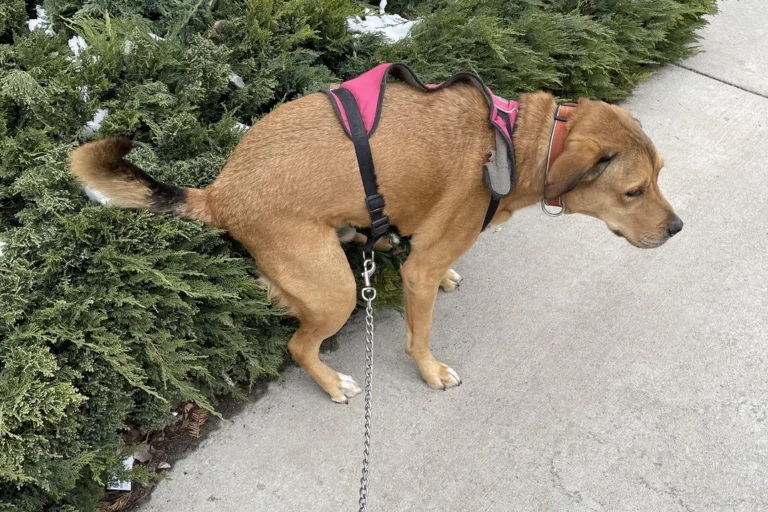Let’s be real for a moment—dog poop isn’t the most glamorous part of being a pet parent.
But it’s an unavoidable responsibility that comes with dog.
If you’re anything like me, you’ve probably wondered: Is there an easier way to handle this messy task?
The answer is a resounding yes!
With the right tools and a little know-how, dealing with dog poop doesn’t have to be a headache.
Let’s break it down step by step to make your life (and your dog’s) a little cleaner and a lot less stressful.
so you dont have to go through like i did at first.
1. Where Should Your Dog Poop?
Training your dog to poop in designated areas can save you time and keep your yard clean. Here’s how to establish the perfect spot:

- Pick a Convenient Location: Choose an area in your yard or nearby that is easy to access and away from play zones or walkways.
- Use Visual Markers: Add a small sign, a patch of gravel, or a specific plant to signal the designated area to your dog.
- Be Consistent: Walk your dog to the same spot every time, especially during training.
- Reward Good Behavior: Praise and reward your dog with a treat whenever they go in the right spot. This reinforces the habit over time.
With patience and consistency, your dog will learn to do their business in the right place, making cleanup a breeze.
2. The Right Tools for Handling Dog Poop
Having the right tools makes dealing with dog poop much easier. Here’s a quick checklist:
- Poop Bags: Biodegradable bags are an eco-friendly option that’s better for the planet.
- Pooper Scoopers: These are great for picking up poop in your yard without having to bend down.
- Portable Bag Holders: Attach one to your dog’s leash so you’re never caught empty-handed on a walk.
- Disposal Bins: A designated bin for dog waste can help keep your yard odor-free.
- Enzymatic Cleaners: These are essential for cleaning up any accidents indoors or dealing with residual odors in the yard.
Personally, I’ve found that having these tools ready and accessible makes the entire process smoother. Trust me, it’s worth the investment.

3. The Process of Picking Up Dog Poop
When it comes to dog poop, the key is to act quickly and responsibly. Here’s how you can do it step by step:
- Pick It Up Immediately: Don’t leave it sitting around. The longer it stays, the more time bacteria and odors have to spread.
- Use the Bag Trick: Place your hand inside the poop bag, pick up the poop, and then turn the bag inside out. Tie it securely to trap the smell.
- Dispose of It Correctly: Never throw dog poop in a storm drain—it can pollute waterways. Instead, toss it in a trash bin or compost it using a pet waste-specific composting system.
A simple, consistent process helps keep your yard clean and your walks worry-free.
4. Cleaning Up at Home
If you have a backyard, managing dog poop takes on an extra layer of responsibility. Here are some tips to keep your space clean:
- Set a Routine: Pick a specific time each day to clean up the yard. A regular schedule makes the task less overwhelming.
- Use a Doggy Septic Tank: These systems break down dog waste naturally, reducing the need for constant disposal.
- Invest in Enzymatic Cleaners: For any lingering odors or stains, enzymatic cleaners work wonders. Spray the area thoroughly to break down waste particles and eliminate smells.
A clean yard isn’t just good for you; it’s also safer for your dog.
5. Dealing with Dog Poop While Traveling
Whether you’re on a road trip or just heading to the local park, dealing with dog poop while out and about requires preparation. Here’s what you need to know:
- Pack the Essentials: Always carry plenty of poop bags and a portable bag holder.
- Scout Ahead: Look for pet-friendly rest stops or parks with designated waste bins.
- Temporary Storage: Carry a small, sealable container for temporary storage if there aren’t any bins nearby.
- Stay Courteous: Always pick up after your dog, even in less-populated areas. It’s not just polite—in many places, it’s the law.
Being prepared means you can handle any situation without stress, keeping your trip enjoyable for both you and your dog.
6. Health Considerations
Dog poop can provide clues about your dog’s health. Keep an eye out for these warning signs:
- Unusual Color: Black or red stool could indicate internal bleeding, while white or gray may signal issues with the liver or pancreas.
- Consistency: Runny poop might mean your dog has a stomach issue or has eaten something they shouldn’t.
- Foreign Objects: If you spot something unusual in their poop, it might be time for a vet visit.
As a pet parent, I’ve learned that paying attention to these details can help catch health issues early. If you ever feel uncertain, it’s better to consult your vet.
Final Thoughts
Dealing with dog poop might not be the highlight of your day, but it’s an essential part of being a responsible pet parent. By training your dog to go in designated areas, using the right tools, maintaining a routine, and staying mindful of your dog’s health, you can tackle this task with ease. Remember, every time you clean up after your dog, you’re helping create a cleaner, healthier environment for everyone—yourself included.




















